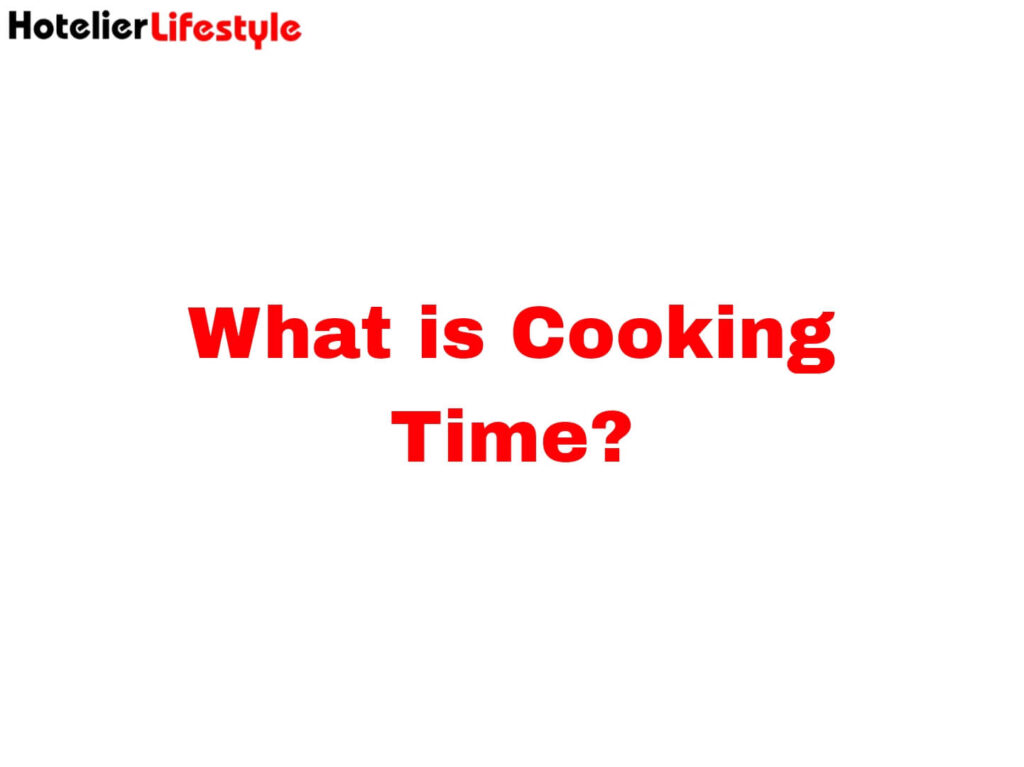Cooking time is the period of cooking from beginning to end. It includes all stages involved in the cooking process such as preheating, active cooking and resting or cooling periods if required. To cook food well and make it safe to eat, it must be correctly timed so that it cooks through properly. Furthermore, it can also help determine how food will taste and what its texture will be like. There are several aspects that affect the amount of time taken when one is preparing a meal; for example, what ingredients are used, how big or thick they are, the methods applied during cooking and finally the temperatures at which these foods were prepared. Proper adjustment of cooking times can facilitate increased flavours and maintained nutrient levels in ingredients thereby making it an important aspect of culinary practices.
What are Key Factors Influencing Cooking Time?
There are a number of factors that determine how long it takes to properly cook food, and whose influence on cooking time is of utmost importance. First, the kind and size of ingredients affects the cooking time greatly. Cooking larger or denser foods will generally take longer than smaller or more tender ones. Moreover, cooking methods are also important. What’s more, altitude may affect the duration for which meals are cooked as lower air pressure at higher altitudes causes variations in boiling points and boiling times too. Lastly, kitchen appliances like ovens and stovetops should be considered regarding their efficiency and calibration since other environmental elements such as moisture content in air can impact on cooking times.
All these factors must be taken into account followed by appropriate adjustments being made so that one can get well-cooked dishes with developed flavors and retained textures within them
What is Cooking Time Calculator?
A helpful kitchen tool for cooking time, is a cooking time calculator which helps make it easy for home cooks and professional chefs to determine how long to cook different foods. This usually considers the type of food, its weight or volume, the desired level of doneness and cooking method selected for the food. Users enter these variables into the calculator to get a rough estimate of how long their food will need to cook for meal preparation purposes. Safety concerns about undercooked meat can be addressed by using a cooking-time calculator that ensures meats are cooked properly. They also help in planning and coordinating multiple dishes’ preparation in order to optimize efficiency within the kitchen. Although useful as guides, it is important not to rely on them solely; personal judgement and experience must also be taken into account because oven performance and quality of ingredients are some of the individual factors that directly affect real cooking times.
How to Calculate Cooking Time?
To calculate cooking time, one should take into account a number of important factors to make sure food is well cooked. Firstly, it is important to know the recipe or method of cooking being used as different dishes and techniques take different times. Start by identifying the kind and size of ingredients you are using as bigger cuts usually need more time to cook while smaller ones need less. Next, consider the cooking method such as baking, roasting, boiling, grilling or frying because each has its own usual timings and temperatures.
With these basic parameters in place, one can estimate how long their meal will take by referring to recipes, cookbooks or trusted culinary sources. Some recipes provide estimated cooking times based on standard cooking conditions and ingredient sizes. But keep in mind that they are just approximations; therefore it is worth mentioning that they might be modified due to individual circumstances like oven calibration, high altitude or personal desire for doneness.
For more accurate computations, you can refer to time tables for cooking, online calculators or even use cooking apps which consider constituent factors such as ingredient weight, desired level of doneness and the chosen method of preparation.
Ultimately, calculating cooking time is both a science and an art that requires being attentive to detail, having experience and understanding how to respond depending on individual situations. Over time you will get used to it and be able to prepare meals with precision.
What is the Difference between Standing Time and Cooking time?
Cooking time and standing time are two separate stages in food preparation. Foods which are heated with baking, boiling, frying or grilling methods are said to be cooked during cooking time. This is essential for changing raw ingredients into a finished dish by using heat to alter their texture, taste and safety. However, standing time is the period that follows after the source of heat has been switched off but before serving the food. Because of this, foods continue to cook slowly due to residual heat hence facilitating merging of flavors as well as firming up internal temperatures. This stage plays an important role in meat cooking since it allows juice redistribution making the meat more tender and tasty when served at last. Consequently, both standing and cooking times are necessary for achieving desirable outcome in various recipes.
What Type of Thermometer is inserted into a Food at the End of Cooking Time?
Usually at the end of cookery, chefs use the food thermometer named as an Instant-Read Thermometer. This type of a food-temperature measuring device is made to take a rapid and precise reading from the inside of the meal. It should be placed in the meat’s or dish’s thickest area, away from any gristle, fat or bones so that one should have an accurate result. Instant-read thermometers are vital in ensuring that food has attained safe internal temperatures, hence avoiding things like food poisoning. These thermostats come either in digital form or analogue with the digital versions being preferred because they show results instantly and can be read by anyone. By using this kind of a thermometer, you will always be sure that your food is cooked well enough both for safety and quality purposes.

